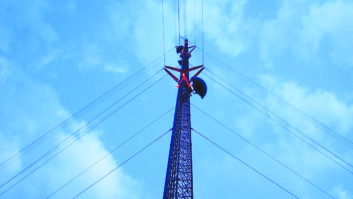
Photo Joelle Gehring
In a recent article in the Daily Press, Newport News, Va., Tamara Dietrich wrote about the plight of migrating birds. “Every spring and fall in the city of Chicago comes a strange and terrible sort of carnage: sidewalks littered with the carcasses of birds.” She was referring to the unfortunate demise of birds that fly into the sides of downtown skyscrapers. But this doesn’t just occur in the Windy City with its skyscrapers. It happens all over the country with tall buildings, wind turbines, cellphone sites and, yes, radio/TV station towers.
This has been a topic of debate in Radio World. In her article “Relief for Tower Owners and Migratory Birds,” Joelle Gehring, biologist for the Federal Communications Commission, said: “Some in broadcasting have expressed doubts that birds collide with communications towers or that bird collisions with towers are a significant threat to bird populations. However, small bird carcasses can be difficult to detect in vegetation and are often quickly removed by scavengers like raccoons and cats. In addition, bird collisions do not occur at every tower on every night, but are instead most common on foggy or rainy nights during spring and fall bird migration.”
Dietrich spoke to John Swaddle, a biology professor at the College of William and Mary in Williamsburg, Va., who hopes to change this threat to the bird population with an “acoustic lighthouse,” a system to warn migrating birds as they approach tall structures. According to the article, the acoustic lighthouse has undergone “a proof-of-concept in the college aviary” and Swaddle is pursuing funding that will enable him to test the system outdoors.
To learn more about Swaddle’s acoustic lighthouse, read Dietrich’ article here.











